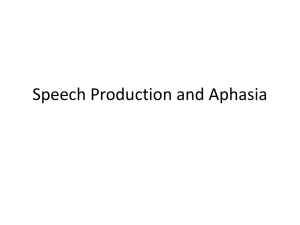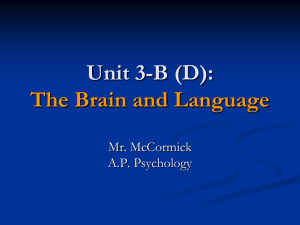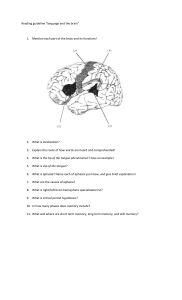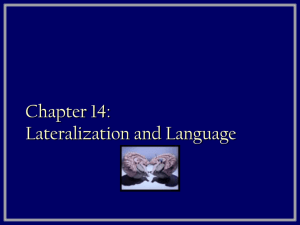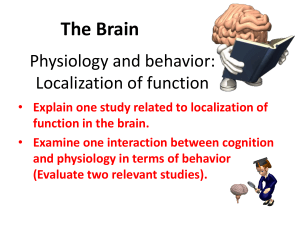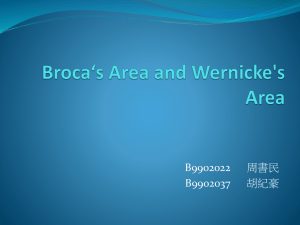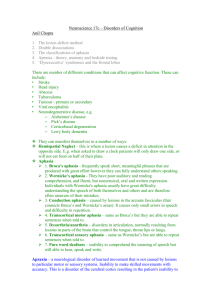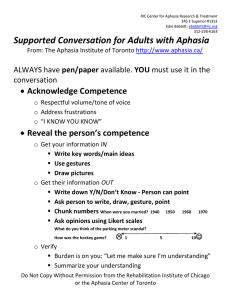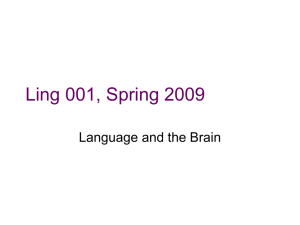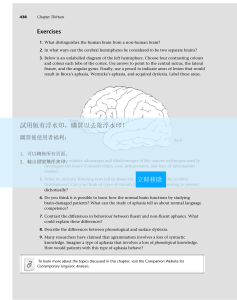9.01 - Neuroscience & Behavior Fall 2003 Massachusetts Institute of Technology
advertisement
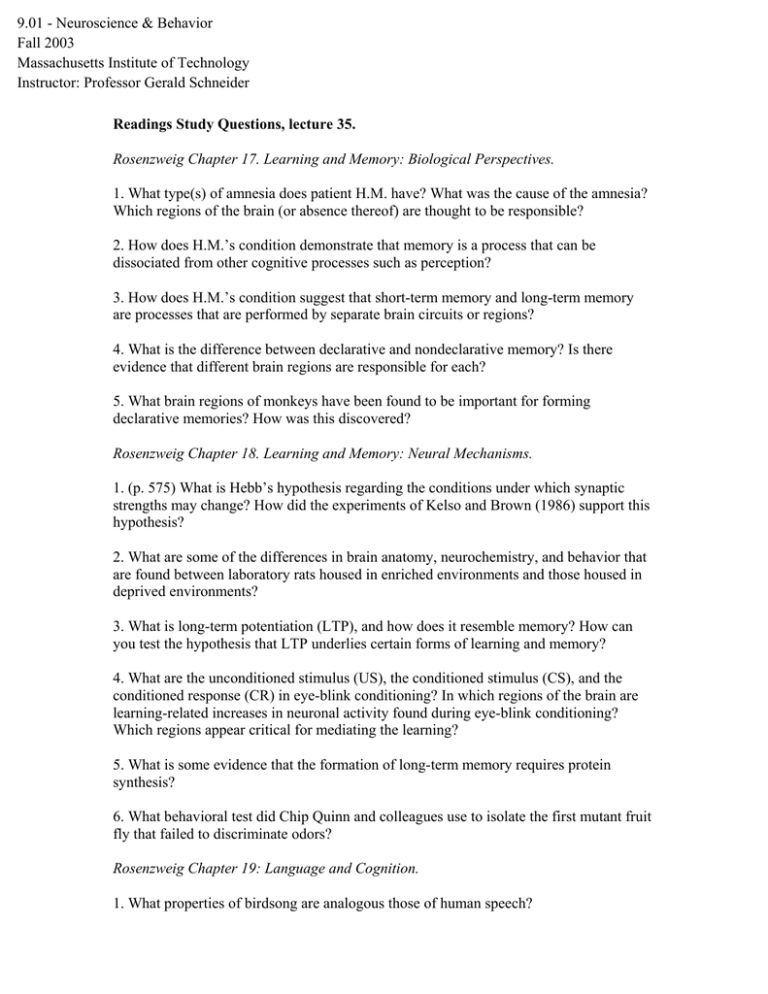
9.01 - Neuroscience & Behavior Fall 2003 Massachusetts Institute of Technology Instructor: Professor Gerald Schneider Readings Study Questions, lecture 35. Rosenzweig Chapter 17. Learning and Memory: Biological Perspectives. 1. What type(s) of amnesia does patient H.M. have? What was the cause of the amnesia? Which regions of the brain (or absence thereof) are thought to be responsible? 2. How does H.M.’s condition demonstrate that memory is a process that can be dissociated from other cognitive processes such as perception? 3. How does H.M.’s condition suggest that short-term memory and long-term memory are processes that are performed by separate brain circuits or regions? 4. What is the difference between declarative and nondeclarative memory? Is there evidence that different brain regions are responsible for each? 5. What brain regions of monkeys have been found to be important for forming declarative memories? How was this discovered? Rosenzweig Chapter 18. Learning and Memory: Neural Mechanisms. 1. (p. 575) What is Hebb’s hypothesis regarding the conditions under which synaptic strengths may change? How did the experiments of Kelso and Brown (1986) support this hypothesis? 2. What are some of the differences in brain anatomy, neurochemistry, and behavior that are found between laboratory rats housed in enriched environments and those housed in deprived environments? 3. What is long-term potentiation (LTP), and how does it resemble memory? How can you test the hypothesis that LTP underlies certain forms of learning and memory? 4. What are the unconditioned stimulus (US), the conditioned stimulus (CS), and the conditioned response (CR) in eye-blink conditioning? In which regions of the brain are learning-related increases in neuronal activity found during eye-blink conditioning? Which regions appear critical for mediating the learning? 5. What is some evidence that the formation of long-term memory requires protein synthesis? 6. What behavioral test did Chip Quinn and colleagues use to isolate the first mutant fruit fly that failed to discriminate odors? Rosenzweig Chapter 19: Language and Cognition. 1. What properties of birdsong are analogous those of human speech? 2. Lesions to which hemisphere are often associated with human language impairment? What is Broca’s aphasia? Lesions of what brain regions are associated with Broca’s aphasia? What is Wernicke’s aphasia? Lesions of what brain regions are associated with Wernicke’s aphasia?

